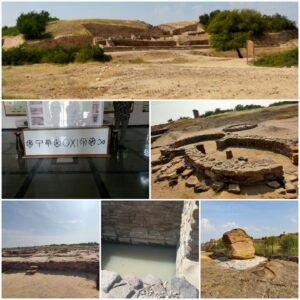
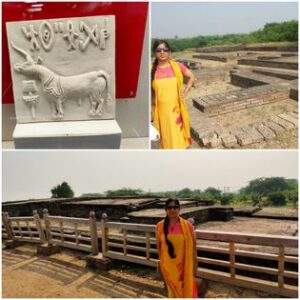
The Indus Valley civilization, Harappa and Mohenjodaro, was something I had only read in textbooks and watched on television documentaries. But travelling to Lothal and Dholavira, in the Western Indian state of Gujarat, and experiencing these very ancient, six thousand year old archaeological sites, was indeed surreal.
LOTHAL, the Ancient Port City
In November 2019, we travelled to Gujarat, planning to visit Statue of Unity and then, the Rann of Kutchh. It was on our way from Baroda to Rann, that we halted for a while at Saragwa village, popularly known as Lothal, the Harappan Port Town. Situated roughly about 120km from Baroda and 85km from Ahmedabad, this site was comparatively less crowded, which let us spend some quality time here.
Lothal was discovered in 1954, and the excavations began from 13February,1955 and continued till 19May,1960 by the Archaeological Survey of India. This site is also a UNESCO World Heritage Site.
From the excavated remains, Lothal seems to have been a trade centre, flourishing with people, thriving with merchants, a metropolitan city and cosmopolitan.
Lothal had the world’s earliest known dock, which connected the city to an ancient course of the Sabarmati River. The Lothal Dockyard is supposed to have harboured small and huge ships, founding a trade route to other Harappan cities in Sindh and today’s Kutchh, and also to other parts of the world like Mesopotamia.
The disciplined lifestyle that the Harappans seem to have led is evident in the uniformity of the Lothal city organization and structure. Commerce and administrative duties seem to have been performed according to standards laid out by a strict Municipal administration. The width of most streets remained the same over a long time, there is proper regularity seen in the remains that look like shops or houses.
The city was divided into a citadel or acropolis and a lower town. The rulers of the town lived in the acropolis, which featured paved baths, underground, surface drains and water well.
The site can be covered in less than 3 hours, so we proceeded to Ahmedabad, reached there by evening. For our onward Gujarat journey.
Dholavira, Harappan site in India
The village of Dholavira is located at a distance of roughly 280 km from the Rann of Kutchh and takes about 5 hours to travel by car. Gujarat tourism does have an accommodation facility near the Harappan site, plus there are a few homestays in the village. We stayed at a homestay, the village is rustic, looks like a place out of your textbooks, with no network, cattle grazing around, a few state transport buses…
A few kilometres away from the village, is, Dholavira, situated in the Khadir island of the Rann of Kutchh. The site was unearthed by the Archaeological Survey of India in 1967, when some villagers informed the local authorities about finding strange looking pots, bangles, beads and weapons. The excavation led to discovering a whole new civilization all together. The now non existent Saraswati river seems to have flowed at that time, the site at Dholavira too is a UNESCO Heritage site.
This 47Hectare quadrangular city lay between two seasonal streams, the Mansar in the north and Manhar in the south, and had three distinct zones-the Upper, Middle and Lower Towns.
The huge and majestic citadel, the Upper portion of the ancient Harappan civilization welcomes you. The site is indeed a vast expanse of layers of engineering marvels. There are large underground godowns, where the Harappans perhaps stored their goods, food and groceries. These warehouses are far removed from the water sources, to keep them dry.
A massive Gate adorns the excavation site, with pillars and walls that could put modern day architecture to shame. The bricks are so well arranged and attached, that even after more than six thousand years, they stand strong and undetachable.
A parchment with an inscription which has not yet been deciphered, lies at the gate, which seems to be a hoarding of some kind.
At one far end, there is a vast plot which looks like an arena, with layered seating facility. The Harappans seem to have enjoyed sports events, music or dance in this open auditorium.
It takes more than two hours to cover the entire site. Then there is the museum at the site, that houses plenty of artifacts like pots, toys, ornaments and seals, not to mention, rough sketches of what the Harappan people would have looked like, what they would have worn, and what jewellery they preferred. The museum also runs a short movie for the visitors, presenting the probable lifestyle of Harappans, and the reason for the end of the civilization.
A bit far removed from the Harappan excavation site, is the mouth of the sea, with rare birds and Hoodoos. This is a part of the Kutchh National Park, and this sea face was empty in the afternoon, with only us as the visitors.
I was truly taken aback, walking back to 6000 years of ancient history, a lost civilization. Easily approachable from Ahmedabad and Rann of Kutchh respectively, Lothal and Dholavira excavation sites are neat and well kept. But the number of visitors were just a handful. Many people don’t seem to be know of the existence of these sites. I think the awareness regarding these archaeological marvels and tourism to these places should be boosted, so that, more Indians and tourists from abroad visit here, to learn more and bring in more tourism.

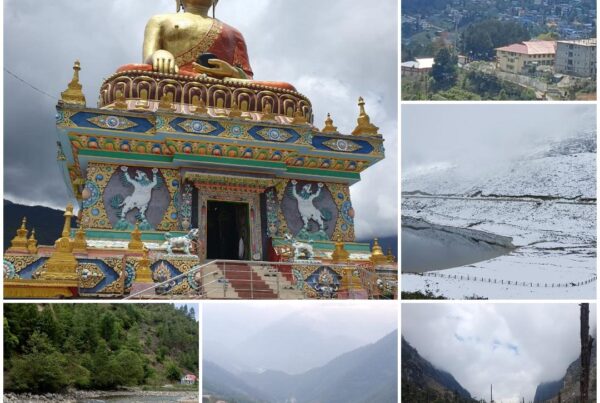
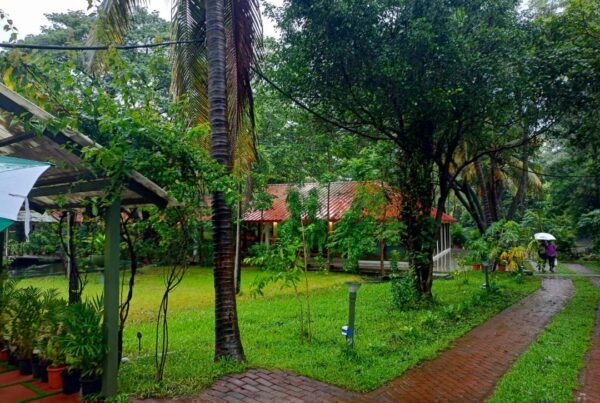
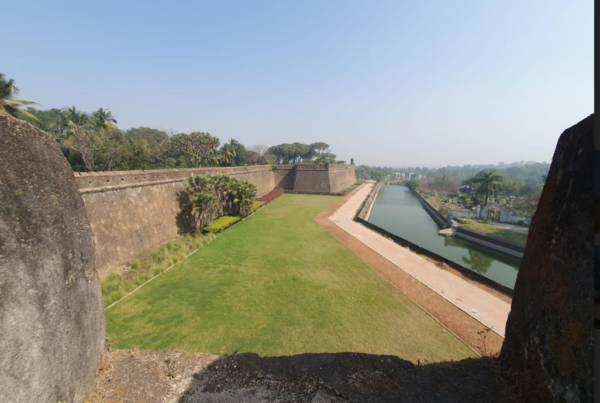
Amazing write ups always whether it is fiction or while sharing a real life experience. Look forward to more.
This one was informative & after reading it, really felt that I should visit the place.
Thank you. You should indeed visit.